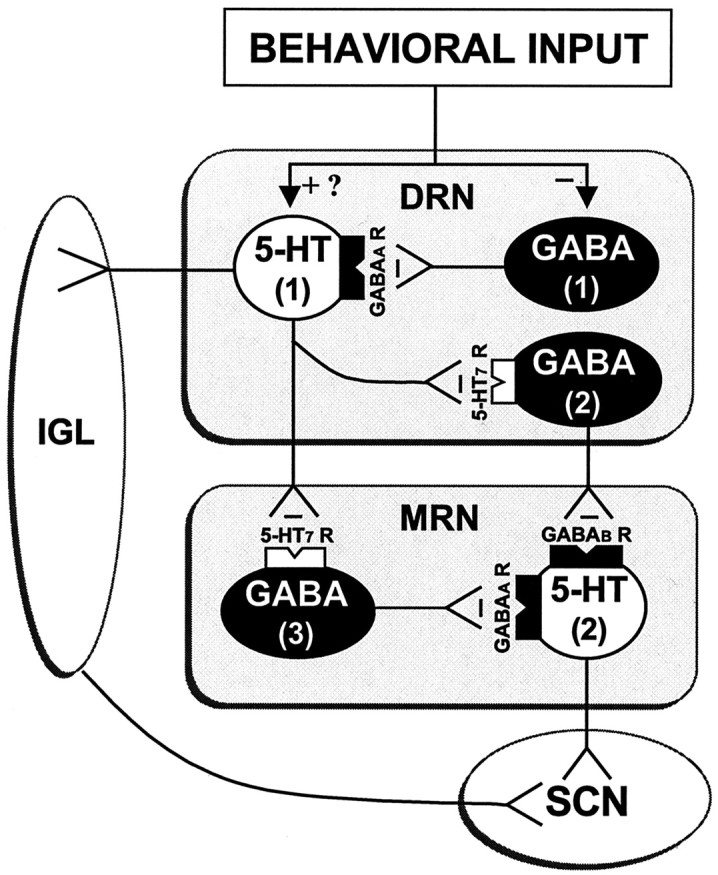Figure 9.

The proposed mechanism by which behavioral information is encoded into serotonergic signaling relayed to the SCN (and possibly the IGL). This model is based on the present findings that (1) DRN-mediated SCN 5-HT release induced by electrical stimulation, GABA antagonist microinjection, or behavioral activation is blocked by intra-DRN or intra-MRN administration of 5-HT7 receptor antagonists, indicating that the DRN communicates to the SCN via a 5-HT7-sensitive multisynaptic DRN→MRN→SCN pathway. DRN-stimulated SCN 5-HT release is blocked by intra-MRN injected 5-HT7 antagonists, indicating that the MRN is a critical component of this pathway. (2) Intra-DRN or MRN injection of GABAA antagonist bicuculline stimulate SCN 5-HT release, indicating that raphe activity is tonically suppressed by GABAA receptor activation. (3) Intra-MRN injection of bicuculline and the GABAB antagonist 2-hydroxysaclofen (data not shown) equally stimulate SCN 5-HT release, indicating that MRN GABAB and GABAA receptors regulate SCN 5-HT release. (4) Electrical DRN stimulation induces 5-HT release in the MRN. This model proposes that behavioral activation suppresses the activity of GABA (1) neurons that tonically inhibit DRN 5-HT (1) neurons (and may also directly activate these 5-HT neurons). The 5-HT (1) neurons, when activated, inhibit DRN and MRN GABA (2 and 3) neurons that tonically suppress MRN 5-HT (2) neurons expressing both GABAA and GABAB receptors. Output from the stimulated 5-HT (1) neurons may also induce release of 5-HT in the IGL. The ensuing activation of the MRN 5-HT (2) neurons causes release of 5-HT from SCN terminals, according to the strength of the behavioral stimulus. This scheme does not rule out the possibility that behavior could also directly stimulate MRN activity. 5-HT7 R, 5-HT7 receptor; GABAA R, GABAA receptor; GABAB R, GABAB receptor; -, inhibition; +, activation.
